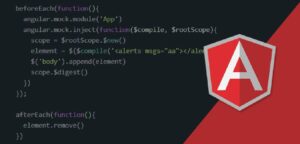About React Js
React, also known as React.js, is a popular JavaScript library for building user interfaces and can be used for developing complex, interactive web and mobile applications. It allows developers to create reusable UI components and manage the state changes of complex applications in an efficient way.
React was developed by Facebook (now Meta) and is now maintained by Facebook and a community of individual developers and companies. React is often used in conjunction with other libraries such as Redux and React Router to build complex applications.
Some of the key features of React include:
1. Components: React introduces a concept of components, which are reusable pieces of code that represent a UI element. Components can contain other components, making it easy to build complex UIs.
2. JSX: React uses a syntax extension for JavaScript called JSX, which allows developers to write HTML-like code in their JavaScript files.
3. Virtual DOM: React uses a virtual DOM (a lightweight in-memory representation of the real DOM) to optimize rendering and improve performance.
4. State and Props: React provides a way to manage state and props (short for properties) in components, making it easy to handle user input, network requests, and other dynamic data.
5. Lifecycle Methods: React provides a set of lifecycle methods that allow developers to execute code at specific points during a component’s life cycle.
React has many benefits, including:
1. Efficient: React’s virtual DOM makes it very efficient, especially for complex and dynamic user interfaces.
2. Easy to Learn: React has a relatively low barrier to entry, especially for developers already familiar with JavaScript and HTML/CSS.
3. Large Community: React has a massive and active community, which means there are many resources available for learning and troubleshooting.
4. Flexible: React can be used for building a wide range of applications, from small web applications to complex enterprise-level applications.
Some of the common use cases for React include:
1. Web Applications: React is well-suited for building complex web applications with dynamic user interfaces.
2. Mobile Applications: React can be used for building mobile applications using React Native.
3. Progressive Web Apps: React can be used for building progressive web apps, which provide a native app-like experience to users.
4. Enterprise Applications: React is widely used in enterprise environments for building complex applications with large teams.
React js Tags we cover:
Here are some commonly used ReactJS tags:
JSX Tags
1. `<div>`: A generic container element.
2. `<span>`: An inline container element.
3. `<p>`: A paragraph element.
4. `<h1>`, `<h2>`, `<h3>`, etc.: Heading elements.
5. `<ul>`, `<ol>`, `<li>`: Unordered and ordered list elements.
6. `<img>`: An image element.
7. `<a>`: An anchor element.
8. `<button>`: A button element.
9. `<input>`: An input element.
10. `<form>`: A form element.
React-Specific Tags
1. `<React.Fragment>`: A fragment element that allows grouping of elements without adding extra nodes to the DOM.
2. `<React.StrictMode>`: A mode that enables strict checking of components.
Component Tags
1. `<ComponentName />`: A custom component element.
Event Handling Tags
1. `onClick`: Handles the click event.
2. `onChange`: Handles the change event.
3. `onSubmit`: Handles the submit event.
4. `onBlur`: Handles the blur event.
5. `onFocus`: Handles the focus event.
Conditional Rendering Tags
1. `{condition && <Component />}`: Conditionally renders a component based on a condition.
2. `{condition ? <Component1 /> : <Component2 />}`: Conditionally renders one of two components based on a condition.
List Rendering Tags
1. `{array.map((item) => <Component key={(link unavailable)} />)}`: Renders a list of components from an array.
Form Tags
1. `<form onSubmit={handleSubmit}>`: Handles the form submission event.
2. `<input type=”text” value={state.value} onChange={handleChange}>`: Handles the input change event.


